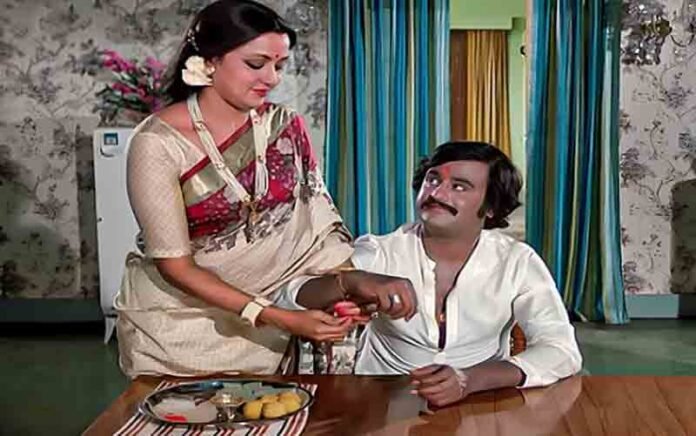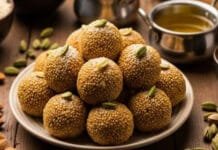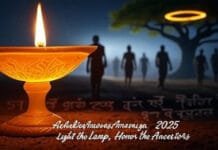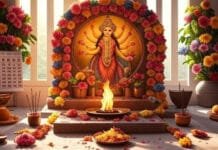Discover why only 3 knots are tied while tying Rakhi on Raksha Bandhan. Learn about the puja process, the necessary materials for the ritual, and the significance behind each knot. Dive deep into the traditions of this beloved Hindu festival celebrated on August 19, 2024.
3 knots in Rakhi
Rakshabandhan, a festival steeped in tradition and familial love, holds a special place in the hearts of brothers and sisters across India. Celebrated with as much fervor as other major Hindu festivals like Holi and Diwali, Rakshabandhan is a day dedicated to the bond between siblings. This year, the festival falls on Monday, August 19, 2024, marking a day when sisters tie a Raksha Sutra, or Rakhi, on their brothers’ wrists, wishing them a long and prosperous life. But have you ever wondered why only 3 knots are tied while tying Rakhi? What is the importance of these knots, and how should the puja be done? Let’s explore these questions and more as we delve into the traditions and rituals that make Raksha bandhan a cherished celebration.
The Essence of Raksha bandhan
A Festival of Love and Protection
Rakshabandhan, which literally translates to “the bond of protection,” is celebrated every year on the full moon day of Shukla Paksha in the month of Shravan. This day symbolizes the unconditional love between brothers and sisters, transcending geographical distances and life’s many challenges. Sisters prepare a special puja thali, and after performing a short ritual, they tie the Rakhi on their brothers’ wrists, praying for their well-being. In return, brothers vow to protect their sisters throughout their lives, and this bond of mutual respect and affection is reinforced.
The Significance of the Date
The timing of Raksha bandhan is also astrologically significant. This year, due to the presence of Bhadra, the auspicious time to tie Rakhi will be between 01:25 PM and 09:36 PM on August 19, 2024. This time window is considered highly favorable for performing the ritual without any obstacles.
Why Are Only 3 Knots Tied While Tying Rakhi?
The Symbolism Behind the Three Knots
You might have noticed that when a Rakhi is tied, it’s secured with three distinct knots. This isn’t just a random tradition; these three knots hold deep spiritual significance.
- The First Knot: For the Brother’s Long Life
- The first knot is tied with a prayer for the brother’s longevity. It’s believed that this knot invokes the blessings of Lord Brahma, the creator, ensuring that the brother leads a long and prosperous life.
- The Second Knot: For the Sister’s Well-being
- The second knot is tied with the sister’s well-being in mind. This knot is dedicated to Lord Vishnu, the preserver, who protects the sister from harm and ensures her health and happiness.
- The Third Knot: For Strengthening the Sibling Bond
- The third knot symbolizes the bond of love and trust between the siblings. This knot is dedicated to Lord Shiva, the destroyer, who removes any negative influences that might affect their relationship.
Connection to Tridev: Brahma, Vishnu, and Mahesh
These three knots are believed to be directly associated with the Tridev—Brahma, Vishnu, and Mahesh (Shiva)—the three primary deities in Hinduism. By tying these three knots, the sister seeks the blessings of these gods to safeguard her brother and strengthen their bond.
How Should the Puja Be Done?
Preparing the Puja Thali
Before the Rakhi is tied, it is crucial to prepare a puja thali with all the necessary items. Here’s a quick guide on what you should include in your Raksha bandhan thali:
- Roli (Red Powder): Used to apply the tilak on the brother’s forehead, signifying the mark of protection.
- Akshat (Rice Grains): Symbolizes prosperity and is sprinkled over the tilak.
- Turmeric: Represents purity and sanctity, often included as a mark of auspiciousness.
- Coconut: Considered a sacred offering in Hindu rituals, representing the divine.
- Rakhi: The most important item, symbolizing the bond of protection.
- Diya (Lamp): Signifies the light of knowledge and the removal of darkness.
- Sweets (Mawa or Kheer): Offering sweets is a way of sharing joy and celebrating the occasion.
Step-by-Step Guide to Performing the Puja
- Lighting the Diya: Begin by lighting the diya in the thali. The light symbolizes the presence of divine energy and purifies the surroundings.
- Applying the Tilak: Apply a tilak of roli and akshat on your brother’s forehead. This tilak is a mark of blessing and protection.
- Tying the Rakhi: Tie the Rakhi around your brother’s wrist with the three knots, making sure to recite prayers for his well-being, your own protection, and the strengthening of your bond.
- Offering Sweets: Feed your brother sweets, symbolizing the sharing of happiness and good fortune.
- Performing Aarti: Finally, perform the aarti by rotating the thali in a circular motion around your brother, offering prayers for his safety and success.
The Importance of Each Item in the Puja Thali
Roli and Akshat: The Tilak of Blessings
The roli and akshat are used to apply a tilak on the brother’s forehead. The tilak is not just a decorative mark; it holds a deeper meaning. The red color of the roli is associated with Shakti, the goddess of power, and the rice grains, known as akshat, symbolize completeness and prosperity.
Turmeric: A Sacred Ingredient
Turmeric, or haldi, is a significant component in Hindu rituals due to its purifying properties. It is believed to ward off evil spirits and bring good luck. Including turmeric in the puja thali is considered auspicious and is a way to ensure the ritual’s purity.
Coconut: The Divine Offering
Coconut, known as “Sriphala,” or the fruit of the gods, is a must in any Hindu ritual. It represents the selfless offering of one’s mind and soul to the divine. Breaking a coconut during the ritual is symbolic of breaking one’s ego and surrendering to the divine will.
Rakhi: The Symbol of Protection
The Rakhi itself is more than just a thread; it is a protective amulet. Tying the Rakhi is believed to shield the brother from negative energies and dangers, ensuring his well-being.
Diya: The Light of Knowledge
The diya, or lamp, is an essential part of the puja. Lighting the diya represents the dispelling of ignorance and the welcoming of knowledge and wisdom into one’s life.
Sweets: Sharing the Joy
Sweets are integral to Indian festivals, and Rakshabandhan is no exception. Offering sweets to the brother after tying the Rakhi signifies the sweetness of the relationship and the wish for a happy, prosperous life.
Auspicious Time to Tie Rakhi
Timing plays a crucial role in Hindu rituals. As per astrology, the auspicious time to tie Rakhi on August 19, 2024, is between 01:25 PM and 09:36 PM. During this time, the planetary positions are favorable, making it the ideal period for performing the Raksha bandhan rituals. This window ensures that the blessings invoked during the ritual are most potent, ensuring the brother’s protection and the sister’s well-being.
FAQs
1. Why is Raksha bandhan celebrated?
- Raksha bandhan is celebrated to honor the bond between brothers and sisters. It’s a day when sisters tie a Rakhi on their brothers’ wrists, praying for their long life and well-being, while brothers pledge to protect their sisters from harm.
2. What is the significance of the three knots in Rakhi?
- The three knots in Rakhi symbolize the blessings of Brahma, Vishnu, and Mahesh. The first knot is for the brother’s long life, the second for the sister’s well-being, and the third for the strength of their relationship.
3. What should be included in the Raksha bandhan puja thali?
- The puja thali should include roli, akshat, turmeric, coconut, Rakhi, a diya, and sweets. Each of these items has its own significance and contributes to the completeness of the ritual.
4. When is the best time to tie Rakhi in 2024?
- The most auspicious time to tie Rakhi in 2024 is between 01:25 PM and 09:36 PM on August 19.
5. Why is turmeric used in the Raksha bandhan puja?
- Turmeric is used for its purifying properties and its association with auspiciousness in Hindu rituals. It is believed to protect against negative energies.
Conclusion
Raksha bandhan is more than just a festival; it’s a celebration of the bond between brothers and sisters, a bond that transcends time and distance. The tradition of tying 3 knots in the Rakhi is a profound one, symbolizing prayers for longevity, well-being, and the enduring strength of the sibling relationship. As you prepare for Raksha bandhan this year, remember the significance of each
















